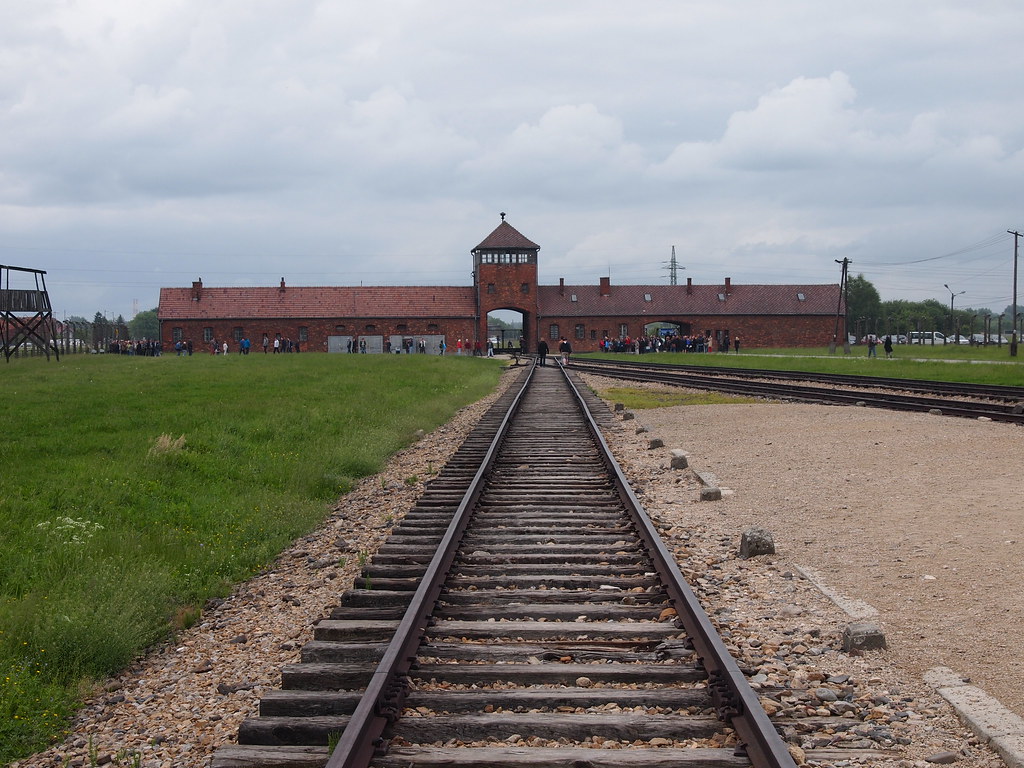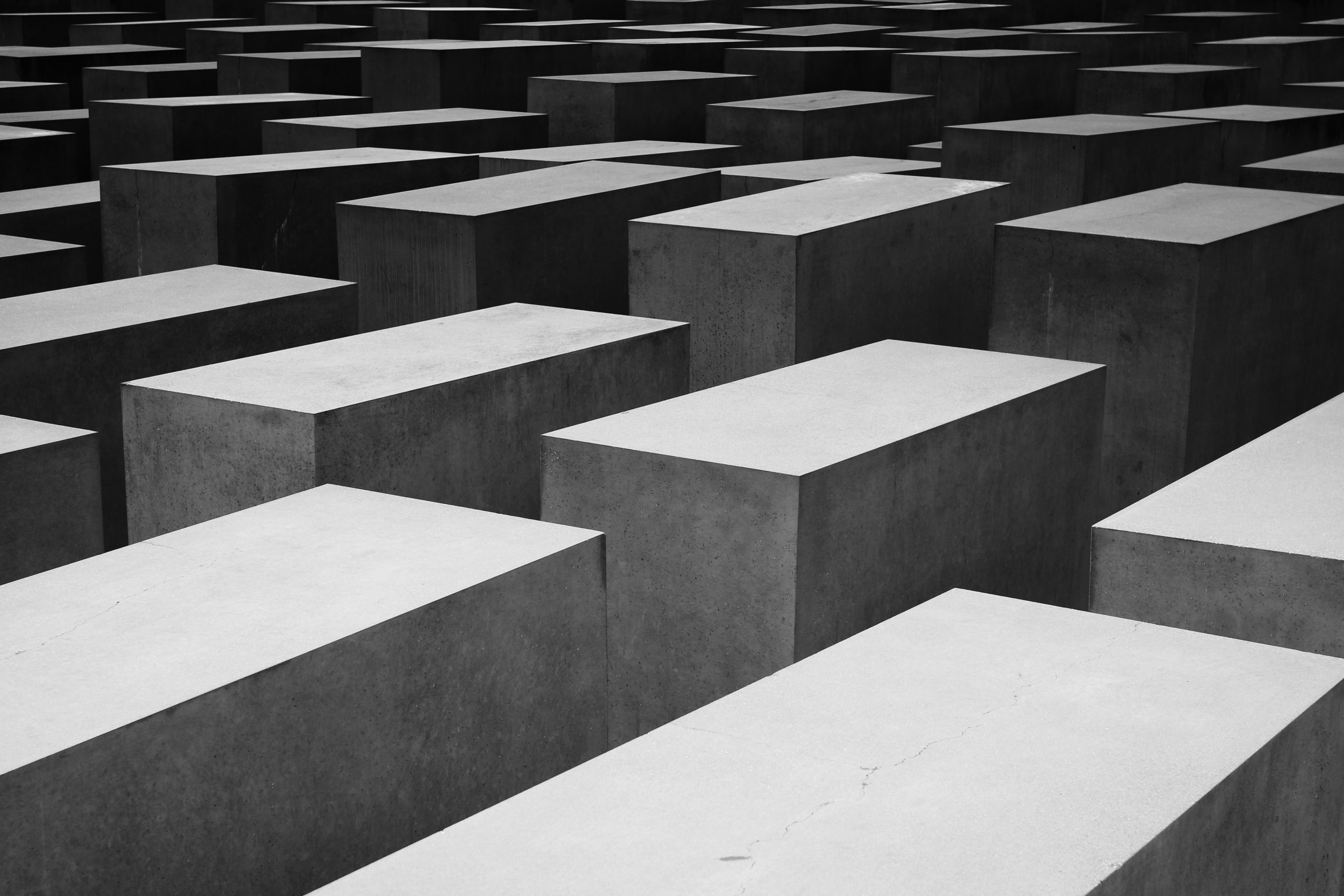You are touring through Europe, going on a weekend vacation, or hitting the hot spots in a new city. Scrolling through Twitter or Instagram, you see that other tourists have flocked to a particular site for their contemplative pictures. Pleased at the opportunity to add something with a more serious tone to your online image, you make sure to spend some time getting the perfect picture on the defunct train tracks outside of the Auschwitz Memorial before you go inside the museum itself. When the time comes to post, you quickly pen a vague, semi-philosophical caption to go along with the image. And therein lies the mistake. The lack of meaningful reflection within the post becomes a message in and of itself.
This pattern — of snapping first and thinking later — has led to a number of high-profile gaffes on social media. After Instagram filled up with images of users balancing on the train tracks leading into the Auschwitz memorial and museum, the museum and its curators pointed the photos out as objectionable and insensitive, tweeting, “When you come to @AuschwitzMuseum remember you are at the site where over 1 million people were killed. There are better places to learn how to walk on a balance beam than the site which symbolizes deportation of hundreds of thousands to their deaths.”
 Social media users have drawn criticism for posing on the train tracks that brought Jewish Holocaust victims to the Auschwitz-Birkenau concentration camp.
Social media users have drawn criticism for posing on the train tracks that brought Jewish Holocaust victims to the Auschwitz-Birkenau concentration camp.
Another incident that garnered an unhappy response involved pop star Justin Bieber’s visit to the Anne Frank House, an educational memorial to one of the most recognizable victims of the Holocaust. At the end of his visit, Bieber wrote in the Anne Frank House’s guest book, “Truly inspiring to be able to come here. Anne was a great girl. Hopefully she would have been a Belieber,” one of his fans. Bieber likely meant the comment as a compliment, but critics quickly complained that he had needlessly inserted himself into the narrative of Anne Frank.
The Vacationer’s Field Guide
The first thing people usually do before donning their cameras and fanny packs is decide where they want to tour. Fortunately, this is also the first and easiest step in figuring out how to explore a new culture with awareness and respect. Is your location directly linked to memorializing or educating about a tragedy? If not, it is probably acceptable to Instagram away, as long as you are not being especially obnoxious or making fun of your destination. If yes, then you might hesitate before breaking out the selfie stick.
In the context of memorials, the issue of taking that picture is not that social media is inherently harmful. As a ubiquitous part of contemporary tourism — and life more generally — there is nothing fundamentally wrong with sites like Instagram and Facebook. According to the Pew Research Center, “Today around seven-in-ten Americans use social media to connect with one another, engage with news content, share information and entertain themselves.” In a Usable Knowledge article developed through the Harvard Graduate School of Education, Leah Shafer illuminated some of the potential impacts of social media, both positive and negative. Central to its positive potential was that the “ability to raise awareness, connect with people across the world, and share moments of beauty can be empowering and uplifting for some.”
But social media has also managed to create a new platform through which disrespect can be displayed. By empowering users to attach thoughtless or careless messages to images of sensitive destinations like memorials, social media introduces new questions about travel and cultural exchange. The solution to such a problem only comes with proactivity on the part of travelers. And that requires sensitivity and context which can only come from better understanding the victims of the tragedies that memorials remember.
From the Loved Ones
The first important perspective comes from the people actually affected by the tragedy in question. They are the ones with knowledge born from experience, and they are the ones who must be involved in decisions about the process of remembering. It seems intuitive that they would have an invaluable outlook on the role of memorials.
Certainly in the case of the 9/11 Memorial, the families of the victims of the attack had plenty to say about how the memorial was being treated. That memorial consists of two deep pools which trace the footprints of the original twin towers, with victims’ names engraved around their edges. In an NBC News article, families complained that visitors were sitting on the names, laughing and smiling as they took pictures, and generally treating the memorial with what was described as “disrespect” by outraged New Yorkers and first responders. The article expressed the sense of pain provoked by what they saw as the poor treatment of their deceased family members and loved ones.
But not all victims and families see things the same way. In an interview with NBC News, Kathy Bowden, who lost her brother in the 9/11 attacks, was more understanding: “I have always assumed that as time goes by, people will come there for gentle recreation — walking, sitting in the dappled sunshine, even picnicking — so I am rather surprised that anyone thinks this is not acceptable behavior.”
 At the 9/11 Memorial in New York City, victims names are carved into the edge of deep pools.
At the 9/11 Memorial in New York City, victims names are carved into the edge of deep pools.
A curator for the Vietnam Veterans Memorial Museum Collection spoke with the HPR about how people interact with the Vietnam Veterans Memorial in Washington, D.C., highlighting meaningful ways in which both relatives and visitors can interact with monuments. For some, visiting the memorial provides “a place to go and remember a specific person, somebody that they know, somebody that they have memories of.” Some of these people leave offerings in remembrance of their loved ones, which the curator described as a way of “remembering those people as not historical or particularly famous, but worth remembering for what they did for their country.” These meaningful interactions can only happen because some past loved one dared to leave something behind before it was convention, confirming that non-traditional interactions with a monument can indeed add value.
These interactions and reactions among the directly affected are by no means uniform, so perhaps it becomes a question of what the memorials were meant to become in the first place. And who better to ask about a memorial’s purpose than its creator?
Monumental Effort
When a monument is constructed, the architect’s design is what begins to breathe life into it. Considering that their role is so essential to the eventual edifice, perhaps architects can provide some guidance on how people should interact with their creation.
The HPR spoke with Peter Eisenman, the architect of the Berlin Holocaust Memorial, who shared his thoughts on the the memorial. With concrete slabs sticking out of a city plaza, the memorial creates an immersive space that Eisenman confirmed inspires children to “immediately want to play tag.” Children, Eisenman explained, see the memorial as an active and playful space, “playing, like, hide and seek, because there is this level of change, of up and down in the space itself. So it is a physical and mental experience, as well as a commemorative one.” And he is not upset about this — Eisenman has actually been pleased to watch people interact with the space: “They’re all kind of activities that one would never have thought of that take place. You know, people do concerts and play and dance on top of the stones, and that’s great.”
 The Berlin Holocaust Memorial, designed by Peter Eisenman, is a maze of simple concrete slabs.
The Berlin Holocaust Memorial, designed by Peter Eisenman, is a maze of simple concrete slabs.
The memorial was constructed to commemorate those Jewish Germans that died in the Holocaust. “It was about the victims of Germany,” according to Eisenman. But he never intended for the memorial to simply sit in passive reverence for the dead. Instead, he wanted it to “attempt to be provocative — to provoke reactions that would allow for the Holocaust to become, let’s say, situated in the everyday.”
This particular memorial’s goal, in the eyes of its architect, was above all to prevent the Holocaust from fading out of public consciousness. And in a sense, when people play on the memorial, Eisenman’s vision for the memorial succeeds. These actions may not be appropriate or respectful to some, but when people interact with the memorial and make it a part of their life, they are also interacting with the history that the memorial represents. However, this sort of active interaction is not appropriate for every memorial. Some may welcome it, but for others, this behavior would appear deeply disrespectful to its creators and caretakers.
Proceed with Caution
Along with those affected by the memorialized history and those who design the monument are the people who manage and take care of memorials day-to-day. These are the people who ensure that the monument or memorial remains well cared for as time passes and who allow it to endure beyond its historical origins and vision. As such, the viewpoint of the curator must be considered.
The Auschwitz-Birkenau Memorial is nothing like Eisenman’s Berlin Holocaust Memorial. At the entrance to one of Nazi Germany’s brutal concentration camps, a long-defunct train track leads into a complex of converted military barracks which, now empty, resemble a small, eery town. Visitors know that they are walking through the spaces where the Holocaust actually happened.
As such, the memorial maintains a distinct set of standards — enforced by the curators. When groups come into the memorial, their leaders are coached on how to handle the subject matter. When people are disrespectful on the site, a curator might quickly step in. And when people are disrespectful on social media, the memorial’s social media manager will privately message the offender, asking them to take down their post. The Auschwitz curators are relentlessly proactive.
In an interview with the HPR, Pawel Sawicki, one of the memorial’s curators and its social media manager, said, “Our job is protecting the legacy and the memory of those who didn’t survive.” To Sawicki and the other curators, Auschwitz has a heavy meaning and many roles. On the one hand, “this place forever should be a cry of despair and a place where people come to commemorate and mourn.” But it also takes on a philosophical import, providing a space “where we can reflect on a lot of important questions and issues about us humans,” Sawicki said. It is educational, too, with curators playing a role in “making people aware that there are certain universal things that they should be aware about.”
But ultimately, Sawicki stressed that “the Auschwitz memorial is in its symbolic or emotional value very close to a cemetery … Auschwitz was a site of murder. Where people were murdered, and their ashes spread at the river.” When a memorial is created for society as a whole but also for the individuals who, like in this case, were killed there, it tends to become more sensitive. It is not only a place to remember, but also part of the bloody and tragic history itself. Auschwitz was once a place where people were abused and killed. It became a place where people can learn about that horror in the hopes that something like that will never happen again — but that original history will always be crucial.
Not all memorials share the same purpose, history, design, or cultural context. Some of their creators encourage play and joy, while others envision visitors participating in thoughtful, quiet reflection. And this is why travelers must be aware of and accountable for their behavior. There is no one set of rules to guide these visits. Monuments and museums are places of reflection. We reflect on the past and recall those who were stolen from their loved ones before their rightful time. And as we walk through these sites, even as we lose ourselves in the painful stories and memories, we must also remain reflective about our behavior, always striving above all not to disrespect these spaces with thoughtless or careless actions.
Correction: An earlier version of this article incorrectly attributed Ms. Bowden’s quote to an interview with the HPR. Ms. Bowden made her comments in an interview with NBC News.
Image Credit: Flickr/xiquinhosilva // flickr/Paul Arps // Petr Kratochvil // Upsplash/Andrea Nardi
